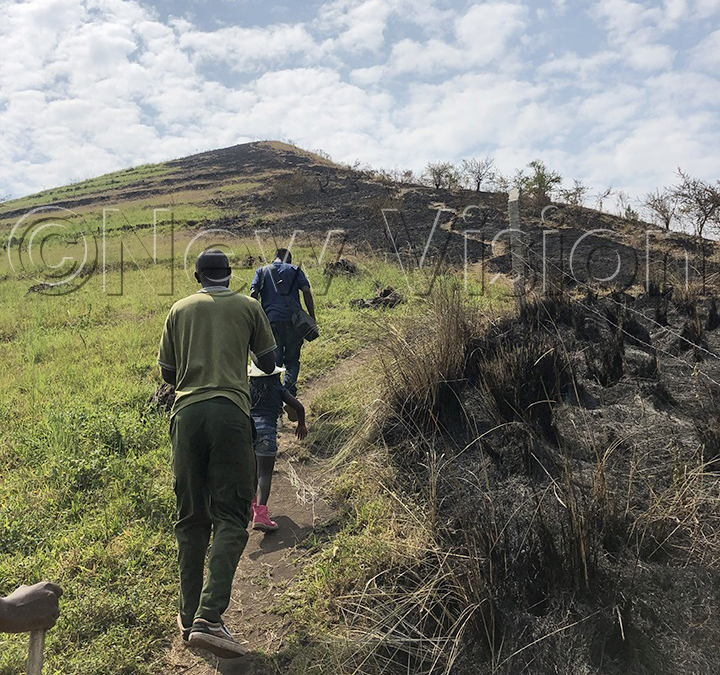The story behind 'Amabere ga nyinamwiru'
When discussing the formation of these breasts, there are two accounts of the same story, one being the geological explanation and the other being local folklore.
TOURISM PEARL OF AFRICA
If you have any interest in local tourism then you've probably heard of Amabere ga nyinamwiru. What you may not know though is the history behind the rock features that look like human breasts. I have always heard about these breasts, and I got an opportunity to see them last week when I took a trip to Fort Portal.
Just a few kilometres West of Fort Portal town, we found the signpost that welcomed us to Amabere Ga Nyinamwiru Caves, Waterfalls and Campsite. I was impressed by how neat and well-kempt the reception area was considering the economic slump in tourism brought about by COVID-19. We were led to the reception where we paid 7,500/- for each adult before we were allocated a guide for our tour, Mr Ignatius Ruyondo.
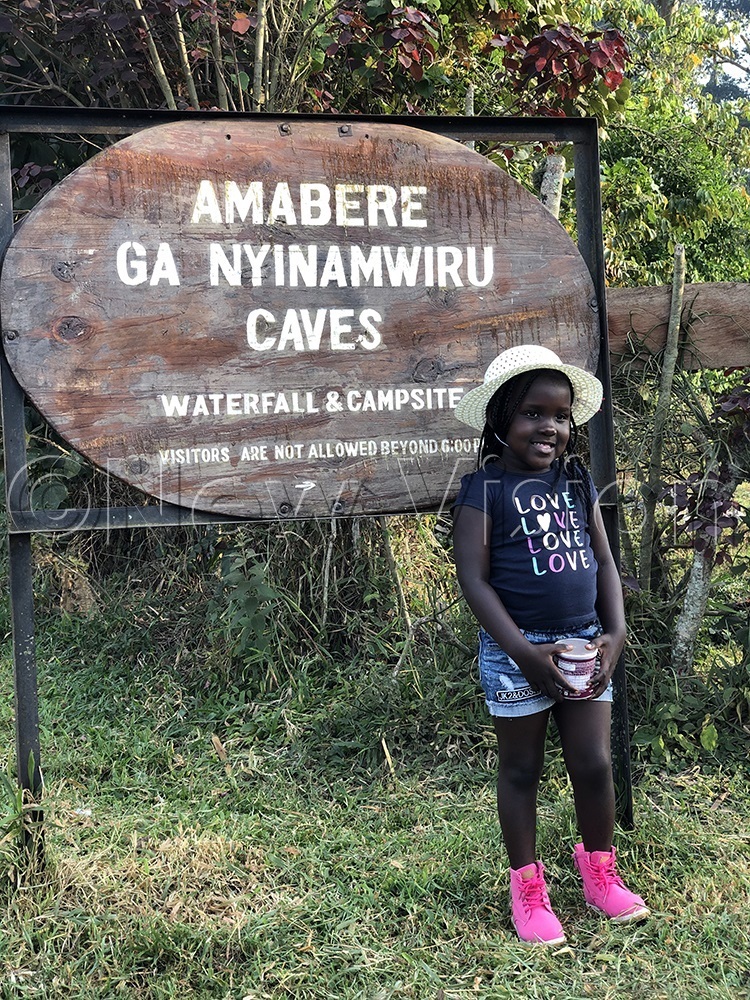
Before taking us to the caves, Ignatius led the four of us to a bench in an open field where he delivered a 20 minutes history lesson about the Bachwezi, Batembuzi, Kintu, Bukuku, Ndahura and all those historical legends I last heard about over 20 years ago in a Social Studies class. I have to give it to Ignatius though, he delivers this lesson in such a dramatic and thrilling way that kept all of us engrossed into the story.
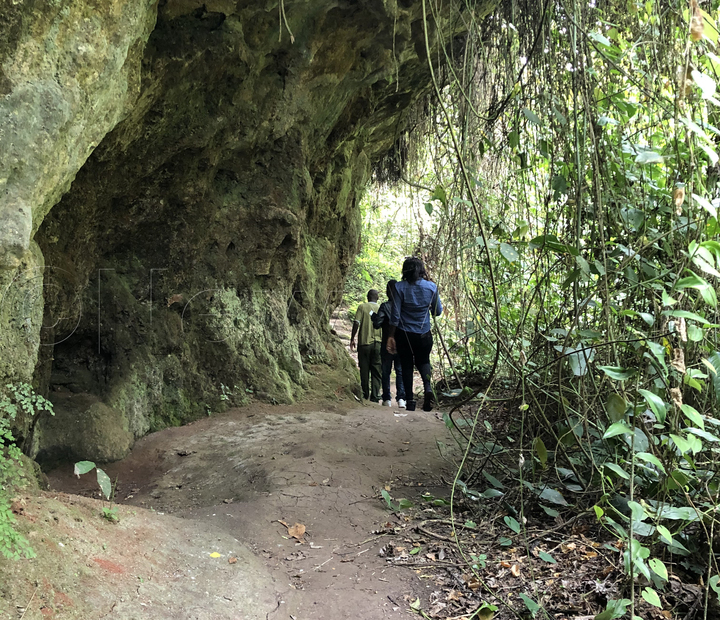
When discussing the formation of these breasts, there are two accounts of the same story, one being the geological explanation and the other being local folklore. Geologically speaking, the breast-like features are what they call stalactites, which are icicle-shaped formations that hang from the ceiling of a cave.
In this case, these stalactites were produced by the precipitation of limestone from water dripping through the cave ceiling. Through the same formation process, stalagmites are also brought into existence, and these are an upward-growing mound of limestone deposits that have precipitated from water dripping onto the floor of a cave.
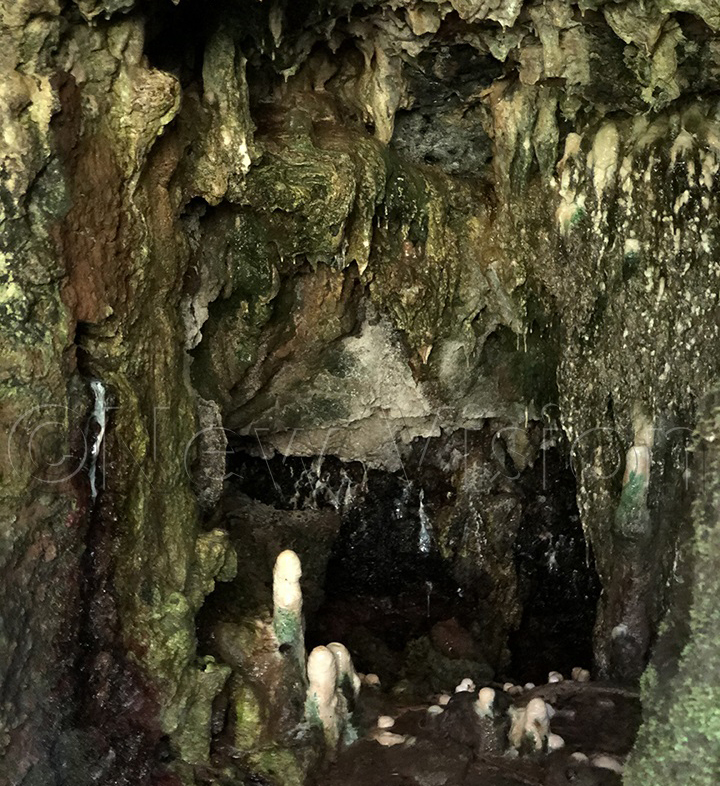
Directly translated, Amabere ga Nyinamwiru means "breasts of the mother of a slave". According to legend, the caves acquired the name after King Bukuku of Bunyoro chopped off the breasts of his daughter Nyinamwiru and had them thrown inside these caves, following a prophecy that the daughter would one day get married and have a son, Ndahura, who would kill the king and take over his throne.
The king was not pleased to hear this prophesy so cutting off her daughter's breasts was an attempt to deform her so men wouldn't be attracted to her, little knowing that she was already pregnant with a boy child.
Upon giving birth, the king made a second attempt to avert this prophecy by ordering the child to be killed. However, the people who were instructed to execute these orders just dumped the child in the caves where her mother's breasts had been earlier dumped.
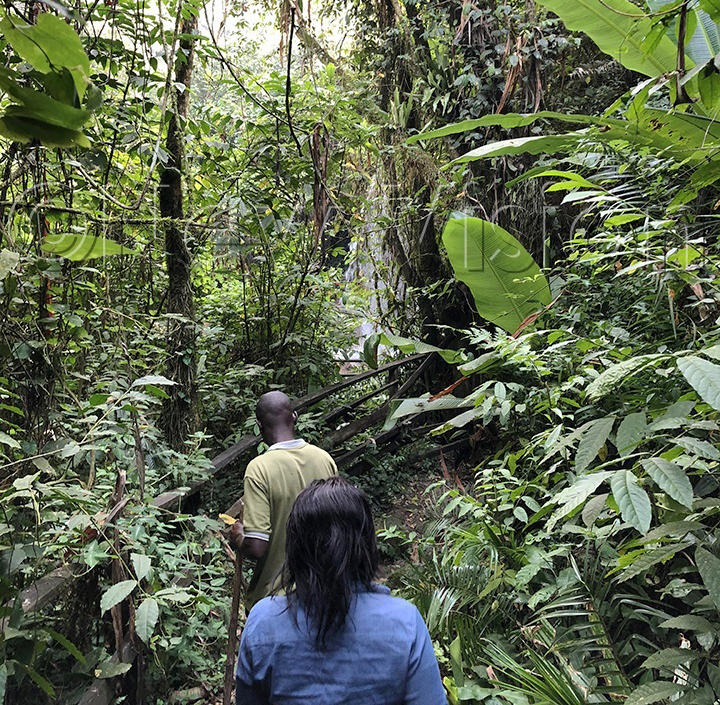
Ignatius then led us through a very narrow path in the forest that slops 400 meters to the caves where we saw the different breast-like stones, some shaped like a woman's another pair shaped like a cow udder, which allegedly symbolizes bihogo, the king's most beloved cow. And then another set of rocks that look like the udder of a dog, symbolizing the dogs that used to protect the cows of the bachwezi.
One other unique feature you wouldn't miss while in the caves is the Mabere waterfall which makes for beautiful scenery for photos with a waterfall in the background.
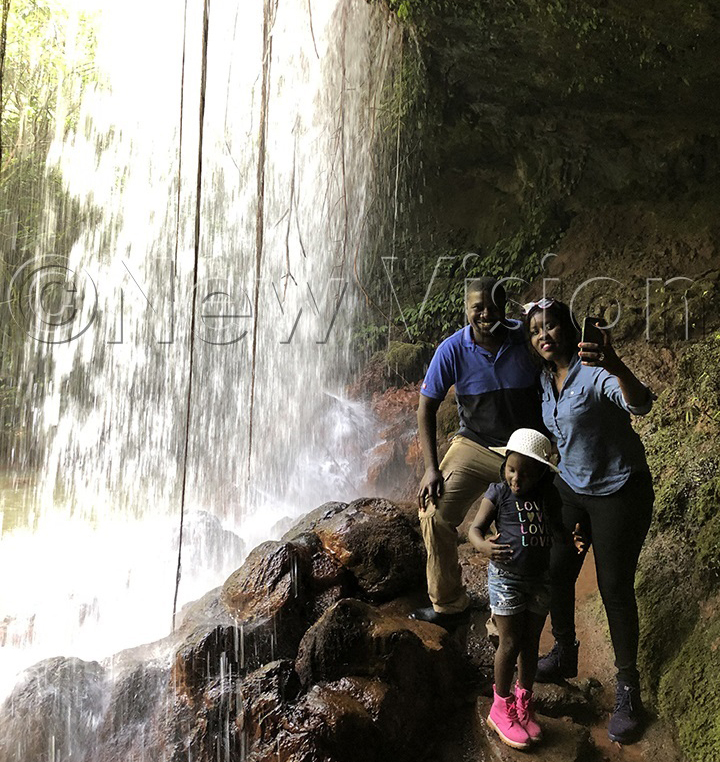
When we left the Mabere caves, we drove about 3km to a village called Kyeganywa which gets its name from the famous steep hill called Gyeganywa hill, popular as a tourist attraction for climbers and photographers. The hill is surrounded by 2 crater lakes; Kigere and Wabikere, and then a lava dammed lake called Saaka.
It's a steep climb that will test your grit and endurance, but the actual reward is at the top in form of a breathtaking view of the three water bodies and the surrounding hills going as far as the eyes can see. It's a sight to behold and it was a good way to wrap up our tour to the caves before proceeding to our final destination, Crater Safari Lodge. A popular luxury lodge in Kibale known for great food and breathtaking crater lake views.
